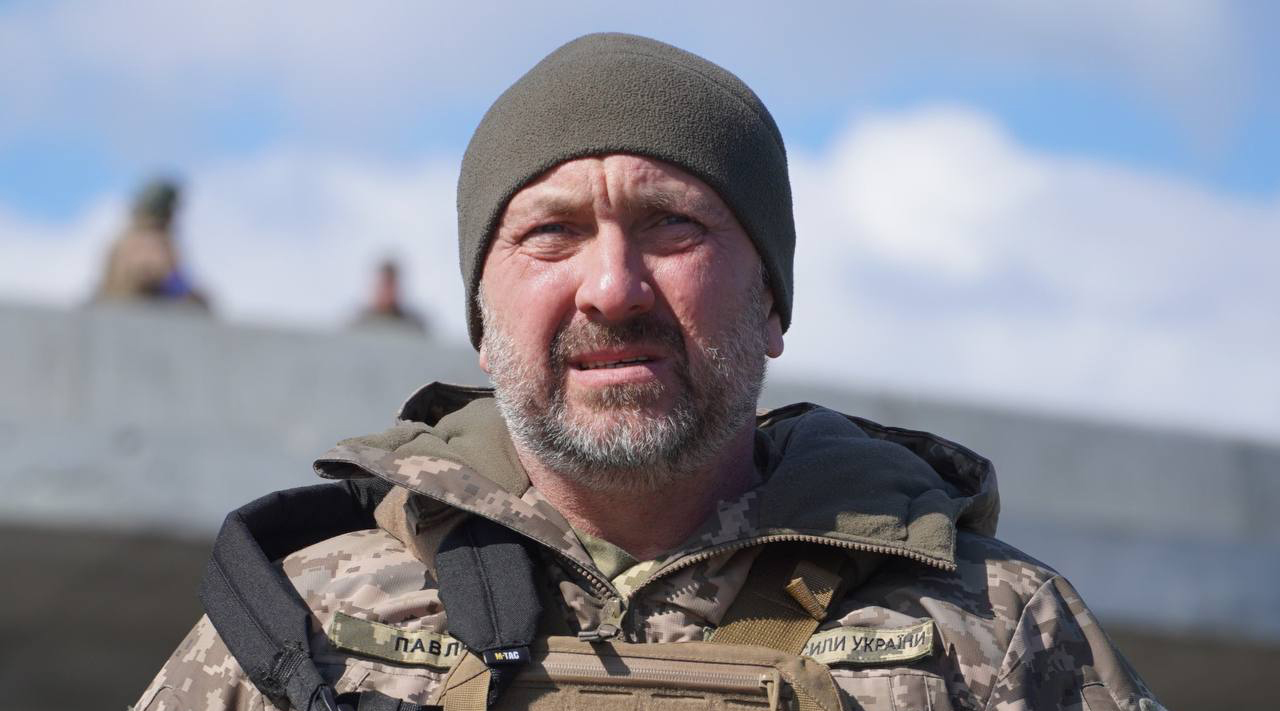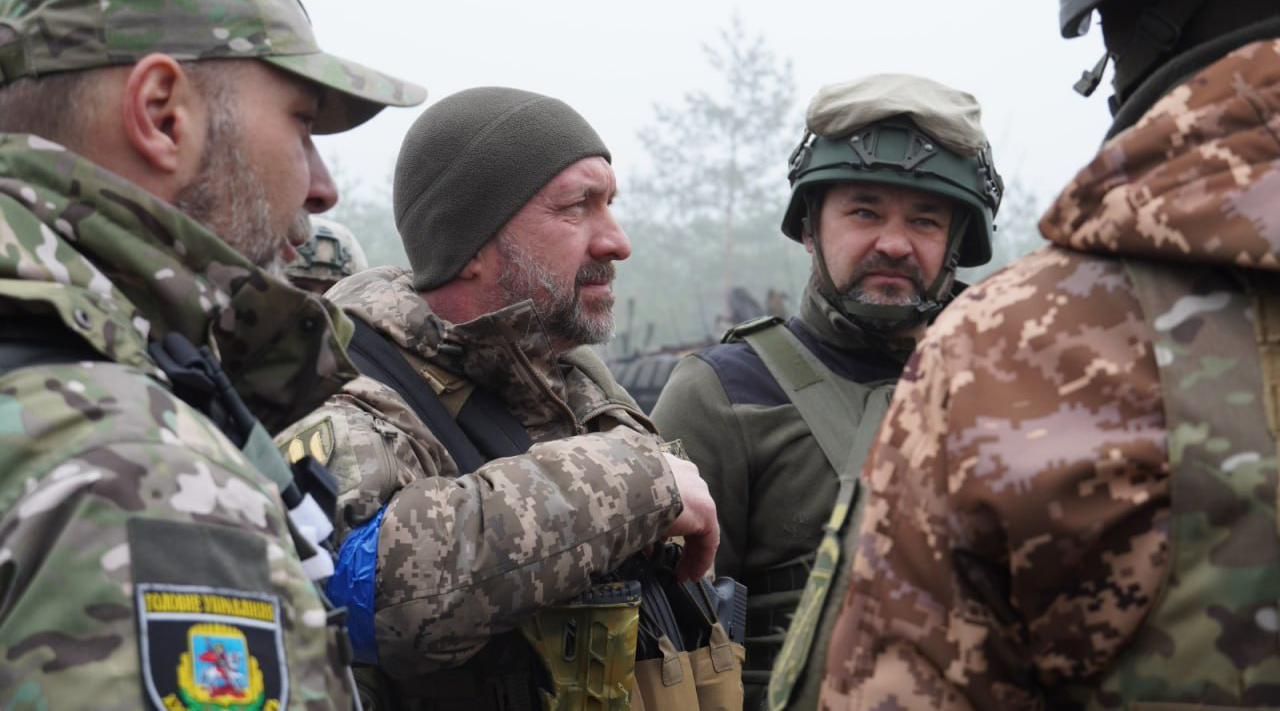During the 1,000 days of the war, Ukraine’s Defense Forces have gone through an enormous path of building and evolvement. How the Ground Force have changed in terms of quantity and quality, how many new weapons and equipment products the Ukrainian defenders have learned, how the Russians changed their tactics to push out Ukrainian forces from the border region of Kursk – Ukrinform discussed these and more questions with Lieutenant General Oleksandr Pavlyuk, the AFU Ground Forces Commander.
- How the Ground Force have changed quantitatively and qualitatively through the time of the full-scale war? Have new fighting and training units been established?
- The changes have taken place indeed, and they are sizeable. The strength of the Armed Forces of Ukraine (AFU) Ground Force has tripled in size over the time since the inception the all-out invasion by Russia in February 2022. In terms of quality, the structure has also underwent significant changes. For example, the number of officers has increased by more than three times, contracted officers by 20 percent, and privates and sergeants by nearly six times.
At the same time, there have been a third more cadets undergoing training at military universities under the authority of the Ground Force Command headquarters. Besides, the number of female service members in the Ground Forces has increased by 30 percent.
It’s pretty logical that the number of military units too has increased. In the Ground Force in particular, the number of fighting units has almost doubled, while the number of training units has increased by 70 percent through the time of the all-out military invasion of Ukraine by the Russian Federation.

OVER THE TIME FROM 2022, UKRAINIAN DEFENDERS HAVE RECEIVED AND EMBRACED HUNDREDS OF NEW WEAPONS AND MILITARY TECHNOLOGIES
- How many new weapons and military technology products of foreign make have our defenders had to learn through this time? After all, international partners are helping continuously, providing new products and technologies that were not present in our military previously.
- Since early 2022, Ukrainian defenders have received and learned how to use hundreds of new different products of military weapons and equipment systems. These are at least eight different products of tanks, 10 products of infantry mobility vehicles, nine products of armored personnel carriers, more than 50 products of artillery and MLRS systems (both self-propelled and towed), 16 products of surface-to-air (SAM) missile systems, over 75 products of close combat systems. To add to this, we currently have in our arsenal more than 11 varieties of armored tactical vans. Among the best renowned brands that are widely known among our citizens are Abrams, Challenger 2, Leopard-1 and Leopard-2 tanks in various modifications, PT-91; Bradley and Spartan infantry fighting vehicles, Marder, and CV-90 among many others; M1117, Stryker, and VAB armored security vehicles; HIMARS and M270 multiple rocket launch systems; in addition to a broad variety of artillery guns, both self-propelled and towed – PZH2000, ARCHER, AS-90, KRAB, CAESAR, M109, and M777 among many more others.
On top of that, the Ground Force have embraced over two dozen different products of surveillance and reconnaissance systems and 25 products of unmanned aerial vehicles. That’s why our guys don’t lack for work to be done, and they demonstrate incredible effectiveness and efficiency in mastering the use of new brands of weapons and military technologies.
Photo
TRAINING CENTERS FOR CONSCRIPTED SOLDIERS HAVE INCREASED THE NUMBER OF HOURS FOR PRACTICAL TRAINING, ADDED NEW TRAINING PROGRAMS
- As you may know, some adaptations have been made to basic military training (BMT) programs for training centers. Can we expect any significant changes in the quality of conscripted personnel training by the beginning of 2025?
- I might say that training quality of conscripted soldiers has already changed, has improved significantly. From November 1, 2024, the duration of basic military training at training camps and centers has been extended to 45 days from 30 days previously. That is, it is now one and a half times longer. Furthermore, not only the training program has become longer, but it has improved significantly in quality. The BMT program has gone through four adaptations since the break-out of the large-scale military invasion, adding more practical rehearsals and training in counter UAV scenarios.
- The enemy has changed its warfighting tactics from what it was at the beginning of the full-scale war. Has the BMT program been adapted to these changes in the enemy's actions?
- I was speaking precisely of the updates to the BMT program which were introduced from 1 November [2024]. New elements of training were added to the latest, fourth edition of the program. War is constantly changing and evolving, and we must train service members with due account taken of these changes. Soldiers must be trained to face the current situation on the battlefield. Indeed, the character of war has changed significantly over these thousand days. For example, beginning on November 1, new recruits have been actively trained in anti-UAV warfare, electronic warfare, as well as camouflage of equipment and positions. Among the new exercises added to the BMT program are shooting down UAVs using pump-action shotguns. Recruits are practicing in shooting down targets attached to real drones. The exercises include simulated drone drops so that recruits get used to the realities of modern warfare and, very importantly, learn how to counteract this all.
In the updated program, more focus is currently on actions during direct confrontation with the enemy, approaching and mopping up trenches, throwing hand grenades in various conditions, and shooting at short-range targets.
- Are there plans to create an instructors’ school in Ukraine? If so, what has been done to this end? What stage has the work got to?
- Indeed, the issue of improving the quality of personnel training at training centers and the AFU fighting units is high on the agenda. The Ground Force is currently training instructors at the Sergeants’ Training Center (STC). The amounts of training have grown as numbers of fighting units under training are increasing. We are fully aware of this. Therefore, the STC’s capacities and capabilities will be almost doubled in the near-term future to meet the requirements of both training centers and fighting units. Actually, this is an instructors’ school in terms of its tasks and functionality, but renaming it is not yet considered.

- A certain part of the Ukrainian military are training abroad. How many Ukrainian defenders have been trained in European countries during the full-scale invasion?
- Where the Ground Force is concerned, almost 30,000 servicemen have underwent training on the territory of partner countries, including 20,000 soldiers trained under BMT programs.
photo
IN KURSK, THE ENEMY CHANGES TACTICS AND REDEPLOYS ADDITIONAL FORCES FROM OTHER FRONTS
- We are all closely following Ukraine military’s incursion into Russia’s Kursk Oblast. How has the enemy's tactics changed during the past three months?
- At the beginning of the [Ukrainian] Defense forces’ offensive operation in Kursk Oblast, the enemy was seeking to stop our troops’ advances despite the cost. They set up ambushes and deployed air attacks. The Russians also relentlessly bombed their own towns and villages. After our troops reached the designated lines and switched to defense, the enemy forces moved from defense manoeuvres to offensive actions. The enemy aimed to regain full control of the territory along the state border.
Currently, enemy forces are deploying small groups, up to a unit in size, and using artillery to push our units out of their positions.
The enemy also started attempts to break through Ukrainian defenses, on orders from Russian political leadership and in an effort to regain full control over Kursk Oblast. [To this end], they are deploying armoured vehicle-supported units up to a company (battalion) in size. This tactic has so far caused significant losses among [Russian] personnel and equipment. In most such attacks, even in the event of success or infiltration into battle formations of our troops, most of the equipment and manpower are destroyed by our anti-tank weapons, artillery and FPV drones. During attempted assaults, up to 30% of enemy equipment is taken out due to mine explosive barriers.
As we all can see, some of the enemy's successes cost them significant losses, forcing them to continuously redeploy additional forces and capabilities to the Kursk region from other axes of combat.
- Is it true to say that the Russian top brass are deploying their most capable forces to fight in the Kursk region?
- Ahead of our [Kursk] incursion, a force grouping of up to 4,000 troops would suffice for the adversary to hold this section of the frontline and conduct show of force actions. About half of them were newly conscripted soldiers.
In connection with the start of the offensive operation by the Defense Forces of Ukraine over the past three months, the adversary have been forced to boost the size of the grouping by pulling up units and subunits from other fronts and operational reserves. At present, the enemy force grouping in the Kursk region amounts to some 50,000 personnel, made up mainly of units of the Naval Infantry Corps and Airborne Assault Force, which are considered the best combat-ready [among all of Russia’s military].
During the three months of the Kursk incursion, the enemy deployed one division-size unit (the 106th Infantry Division consisting of three regiments), two brigades (11th and 83rd Separate Air Assault Brigades) and one regiment (56th DShP and 7th DShD) of the Airborne Assault Force, in addition to two brigades (155th and 810th Naval Infantry Brigades) and one regiment (177th Naval Infantry Regiment) of the Naval Infantry Corps.
By the way, the redeployment of enemy's forces and capabilities continues to this day. To fulfill the task of quickly regaining full control over the territory of the Kursk region, one more division-size unit is being redeployed to the area, namely the 76th DShD Division consisting of three regiments with a total strength of about 7,500 personnel.
IN 2025, THE GROUND FORCE WILL INCREASE THE USE OF UNMANNED GROUND SYSTEMS
- Is the Ground Force planning to intensify the use of robotic systems on the battlefield in 2025?
- The use of unmanned ground systems by the Ground Force units is being intensified and scaled up. Whereas at the inception of the full-scale war only few fighting units deployed ground robots, which were used mainly for logistics support, then today ground robotic systems are being deployed to perform the entire spectrum of combat and special tasks, having reached the same level of importance as airborne unmanned systems.
In pursuance of the Unmanned Ground Systems Development Concept, the embracement of unmanned ground systems by the Ground Force units is proceeding in two directions chosen as most promising: the first is the robotization of the existing units to improve their combat effectiveness and boost their capabilities for performing combat and special tasks; the second is the organization of separate unmanned ground systems units to act as kind of centers of excellence in the deployment, maintenance and development of unmanned ground systems.
We also aim to create a robust communication and control system to enable a unit to use continuously and simultaneously all the available unmanned capabilities across the aerial and surface domains.
In 2025, in order to improve the ground robotic capability of the Ground Force, the possibility is being considered to reinforce the existing fighting units with specialized unmanned ground systems subunits.
That being said, the Ground Force is undertaking every effort to boost the use of unmanned capabilities for all tasks for the sake of minimizing the risk to life and health of personnel.
Interviewed by Iryna Kozhukhar
